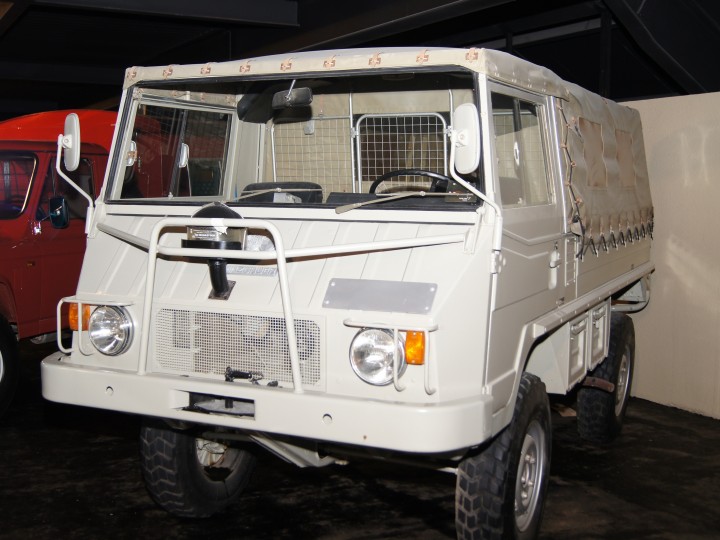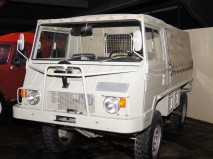1980 Pinzgauer Punch 710M
The Pinzgauer first generation model (710, 712) was produced until 2000 by Steyr-Daimler-Puch in the city of Graz, Austria. It was, and is in use in many armies around the world like Austria, Switzerland, United Kingdom, Saudi Arabia, Thailand, Albania, and Bolivia. When Austrian millionaire Mr. Stronach took over the shareholder majority of Steyr-Daimler-Puch offroad vehicles; he gave the right to build the Steyr Pinzgauer to Automotive Technik Ltd (now BAE). As of 2009, in the Graz plant, the Mercedes-Benz G Wagon / Puch G offroad vehicles were being built.
The Pinzgauer is one of the most capable all-terrain vehicles ever made.[citation needed] While not as fast (110 kilometres per hour (68 mph)) as the American Humvee, it can carry more troops. Even the smaller 710M can carry 10 people or two NATO pallets. Both the 4x4 and 6x6 models can tow 5,000 kilograms (11,023 lb) on road; and 1,500 kilograms (3,307 lb) or 1,800 kilograms (3,968 lb), respectively, off-road. It has a range of over 400 kilometres (249 mi) on one tank of fuel, or nearly 700 kilometres (435 mi) with the optional 125 litre tank. The first generation Pinzgauer is available in both four-wheel drive (4x4) (model 710) and six-wheel drive (6x6) (model 712) versions.
Specifications
All the first generation Pinzgauers are equipped with:
- 2.5 litre inline four-cylinder air-cooled engine. An exception was made on certain 712 variants towards the end of production that came with a 2.7-litre air-cooled four-cylinder engine. This was primarily on ambulances.
- DIN rated motive power: 65 kilowatts (88 PS; 87 bhp) (105 hp SAE)
- Torque: 180 newton metres (133 lbf•ft)
- Five-speed manual transmission with two-speed transfer case
- four-wheel-drive or six-wheel-drive with on-the-fly hydraulic differential locks
- Fully independent suspension
- Backbone chassis tube
- Integrated differentials
- 24 volt electrical system
- Vacuum assisted drum brakes
- Portal axles to give extra clearance





